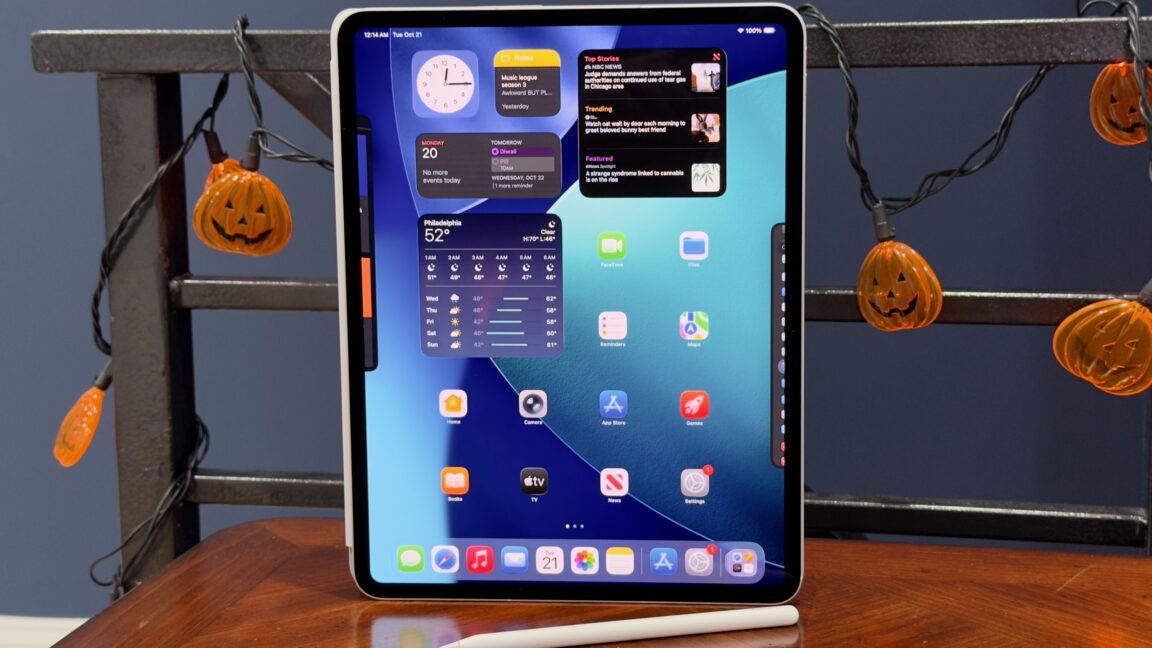This year’s iPad Pro is what you might call a “chip refresh” or an “internal refresh.” These refreshes are what Apple generally does for its products for one or two or more years after making a larger external design change. Leaving the physical design alone preserves compatibility with the accessory ecosystem.
For the Mac, chip refreshes are still pretty exciting to me, because many people who use a Mac will, very occasionally, assign it some kind of task where they need it to work as hard and fast as it can, for an extended period of time. You could be a developer compiling a large and complex app, or you could be a podcaster or streamer editing or exporting an audio or video file, or maybe you’re just playing a game. The power and flexibility of the operating system, and first- and third-party apps made to take advantage of that power and flexibility, mean that “more speed” is still exciting, even if it takes a few years for that speed to add up to something users will consistently notice and appreciate.
And then there’s the iPad Pro. Especially since Apple shifted to using the same M-series chips that it uses in Macs, most iPad Pro reviews contain some version of “this is great hardware that is much faster than it needs to be for anything the iPad does.” To wit, our review of the M4 iPad Pro from May 2024:
Still, it remains unclear why most people would spend one, two, or even three thousand dollars on a tablet that, despite its amazing hardware, does less than a comparably priced laptop—or at least does it a little more awkwardly, even if it’s impressively quick and has a gorgeous screen.
Since then, Apple has announced and released iPadOS 26, an update that makes important and mostly welcome changes to how the tablet handles windowed multitasking, file transfers, and some other kinds of background tasks. But this is the kind of thing that isn’t even going to stress out an Apple M1, let alone a chip that’s twice as powerful.

